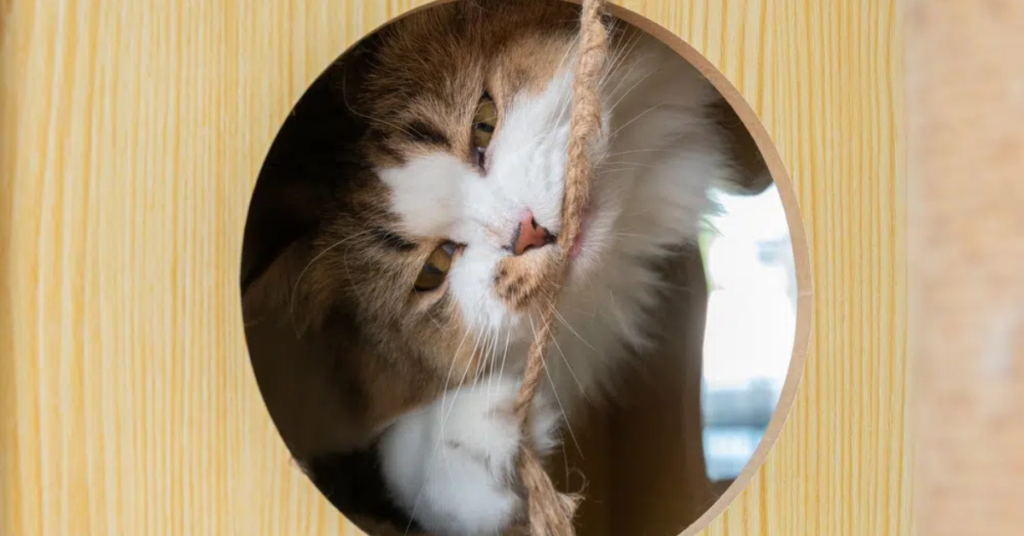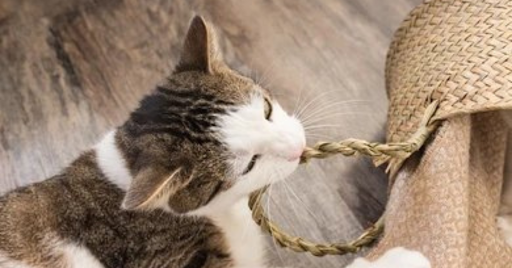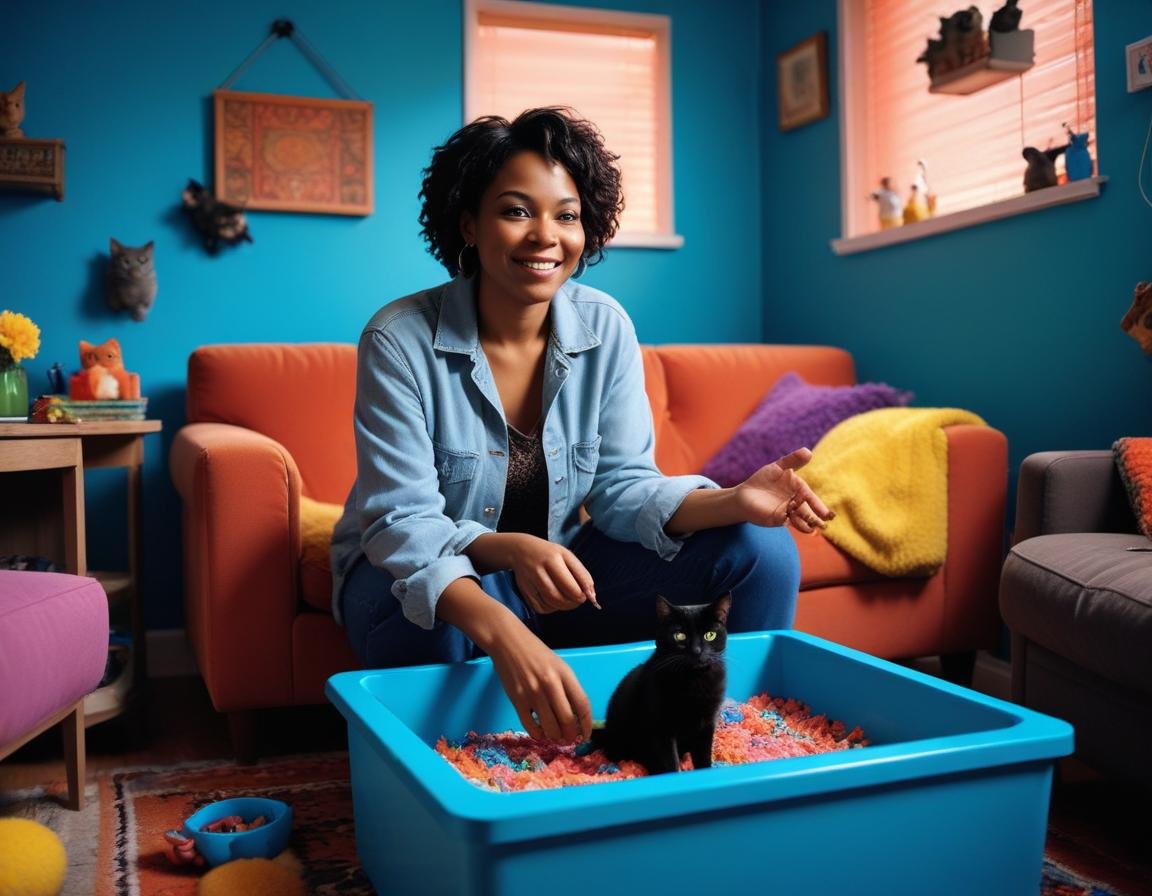Introduction to Pica in Cats
Have you ever noticed your cat chewing on something unusual—maybe a piece of fabric, some plastic, or even paper? This behavior might seem harmless or quirky at first, but it could indicate a condition called pica. Pica in cats refers to a compulsive habit of eating non-food items. While it might appear like a minor issue, it can result in severe health complications, such as blockages in the digestive system, poisoning, or dental damage. Understanding this condition and knowing how to manage it can make a world of difference for your feline friend.
Signs of Pica in Cats

Pica in cats often display noticeable behaviors that signal something might be wrong. They chew on and sometimes ingest a variety of non-food items, such as cardboard, electrical cords, fabrics, or even plants. This habit can lead to physical symptoms that include vomiting, lethargy, and changes in stool. Identifying these behaviors early is crucial for taking the necessary steps to address the condition. Paying attention to your cat’s habits can help you determine if pica is at play.
Common Causes of Pica in Cats
Understanding the root causes of pica is key to managing the condition effectively. Several factors contribute to this behavior.
Nutritional Deficiencies
Cats often turn to non-food items when their diets lack essential nutrients. Nutritional deficiencies in cats can occur if their meals do not include the right balance of proteins, vitamins, or minerals. When their bodies seek what’s missing, they may attempt to consume inappropriate items.
Stress and Anxiety
Stress is a significant trigger for many behavioral issues in cats, including pica. Cat stress and anxiety can result from changes in the household, new pets, lack of stimulation, or even loud noises. Much like humans biting their nails when nervous, cats may chew on non-food items to self-soothe.
Genetic Factors
Some cats are predisposed to pica due to their genetic makeup. Certain breeds, such as Siamese and Burmese, are more likely to exhibit this behavior. This hereditary link emphasizes the importance of monitoring high-risk breeds closely.
Medical Conditions

Underlying medical conditions can also contribute to pica. Dental pain, gastrointestinal issues, or hormonal imbalances are common culprits. In these cases, pica might be the cat’s way of responding to discomfort or irritation.
Diagnosing Pica in Cats
Proper diagnosis is the first step toward addressing pica in cats. The process typically involves the following:
Veterinary Assessment
A veterinarian plays a critical role in diagnosing pica. They will conduct a thorough examination, including physical assessments, blood tests, or imaging, to rule out medical issues like gastrointestinal blockages or deficiencies.
Observational Techniques
As a pet owner, you can assist in the diagnostic process by observing and documenting your cat’s behavior. Note what objects they target, how often the behavior occurs, and any physical symptoms like vomiting or lethargy. Sharing this information with your veterinarian provides valuable insights.
Risks Associated with Pica in Cats
Pica isn’t just a quirky behavior—it comes with significant risks. Cats that consume non-food items are at risk of intestinal blockages, which can lead to severe pain and even require surgery. Additionally, ingesting toxic materials like certain plants, chemicals, or fabrics can cause poisoning. Even less harmful items can result in dental damage, which might lead to further health complications.
Management and Treatment of Pica in Cats
Once pica is diagnosed, there are several ways to manage and treat the condition effectively.
Addressing Nutritional Deficiencies
If pica is caused by a lack of nutrients, providing a balanced diet is essential. High-quality cat food, often recommended by a veterinarian, ensures your cat gets all the essential proteins, fats, vitamins, and minerals. In some cases, supplements may be necessary to address specific deficiencies.
Reducing Stress
Managing cat stress and anxiety can go a long way in reducing pica. Creating a calm and predictable environment for your cat is crucial. Introduce calming aids like pheromone diffusers, provide interactive toys to keep them engaged, and establish consistent feeding and play schedules to reduce anxiety.
Behavioral Interventions
Behavioral interventions can help redirect your cat’s attention away from non-food items. Providing safe alternatives, such as chewable toys or puzzle feeders, is a great way to satisfy their need to chew. Positive reinforcement can also be used to discourage undesirable chewing behaviors.
Medical Treatment
For cases where pica is linked to underlying medical conditions, treatment will focus on addressing the root issue. For example, dental pain might require tooth extraction, while gastrointestinal problems may call for medication or dietary adjustments. In severe cases of anxiety, veterinarians might recommend anti-anxiety medications.
Preventing Pica in Cats

Prevention is always better than treatment. Taking proactive steps can help minimize the risk of pica in cats.
Regular Health Check-Ups
Routine veterinary visits are critical. These check-ups allow veterinarians to catch potential health issues, such as deficiencies or underlying conditions, before they become severe.
Environmental Enrichment
Keeping your cat mentally and physically stimulated is essential for preventing boredom, a common trigger for pica. Environmental enrichment for cats includes providing toys, climbing structures, and scratching posts. These activities help redirect their energy toward safe and engaging outlets.
Proper Diet and Hydration
Feeding your cat a high-quality, nutrient-rich diet ensures they get everything they need to stay healthy. Cats also need constant access to fresh water to stay hydrated, which supports overall well-being and reduces the likelihood of developing pica.
When to Seek Professional Help
If your cat is consistently chewing on or ingesting non-food items despite your efforts to manage the behavior, it’s time to consult a veterinarian. Symptoms such as persistent vomiting, lethargy, or significant changes in appetite should never be ignored. Early intervention can prevent serious health complications and improve your cat’s quality of life.
You can also read about
Cat Checkup at the Vet: 6 Things to Expect (Vet Approved)
Conclusion
Understanding pica in cats is essential for protecting their health and well-being. While this behavior might seem odd or harmless at first, it can have serious consequences if left unaddressed. By identifying the causes—whether they stem from nutritional deficiencies, stress, genetics, or underlying medical conditions—you can take appropriate steps to manage the condition effectively.
Spotting the symptoms early, seeking veterinary care, and implementing changes like improving your cat’s diet, reducing stress, and enriching their environment can make a significant difference. Preventive measures and regular check-ups also play a crucial role in ensuring your cat stays healthy and happy.
If you notice persistent or harmful behaviors, consult a veterinarian immediately. With proper understanding, patience, and care, pica can be managed, allowing your feline companion to thrive in a safe and fulfilling environment.
FAQs on Pica in Cats
Can pica in cats resolve on its own?
It depends on the cause. Temporary stress-induced pica may subside as the stressor is removed, but persistent cases often require intervention.
Are some cats more prone to pica?
Yes, certain breeds like Siamese and Burmese are more likely to develop pica due to genetic predisposition.
How can I reduce stress-related pica in cats?
Create a calm environment, use interactive toys, and maintain consistent routines to reduce cat stress and anxiety.
What are safe alternatives for cats with pica?
Chewable toys and puzzle feeders are great options. These can satisfy your cat’s need to chew without risking their health.
Is pica dangerous for cats?
Yes, pica in cats can lead to severe health issues like intestinal blockages, poisoning, or dental injuries. It’s essential to address the behavior promptly.




